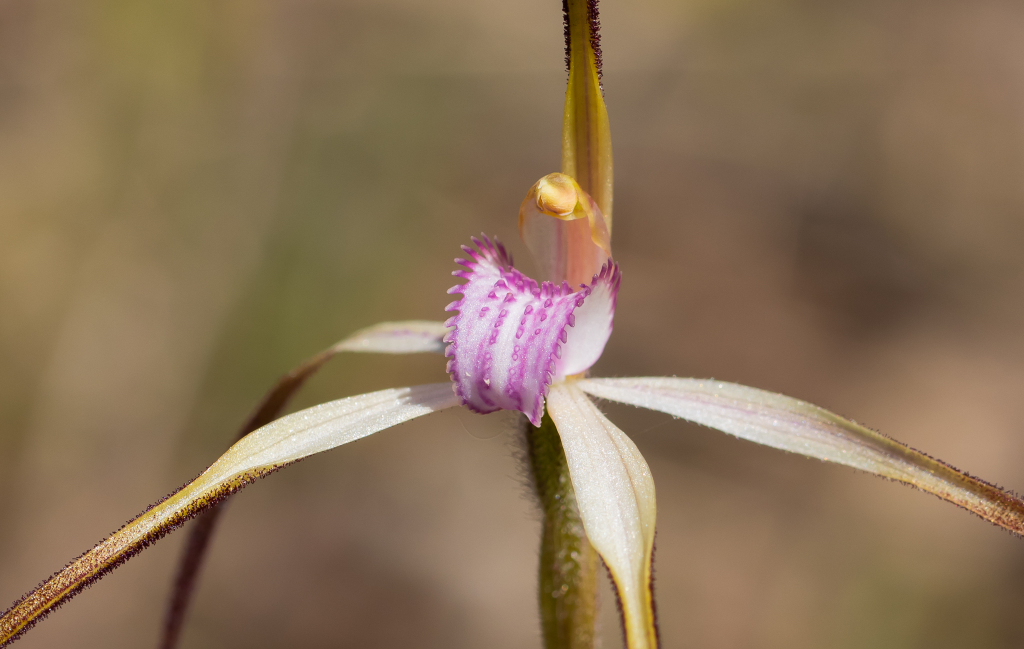Caladenia versicolor
G.W.CarrFlowering plant 15–25 cm tall. Leaf 5–10 cm long, 6–8 mm wide, blotched with red at base. Flower usually solitary, sometimes 2; perianth segments stiffly spreading, 3–6 cm long, whitish, pinkish or purplish, with dark brownish glandular tails; sepals flattened at base, 2–4.5 mm wide, tapered to a long tail densely covered in crowded, glandular hairs; petals shorter than sepals but otherwise similar. Labellum erect and curved forward with apex recurved and lateral lobes erect, lamina ovate-lanceolate, obscurely 3-lobed, 12–16 mm long and 7–9 mm wide (when flattened), whitish, pinkish or purplish, often with red margins and mid-lobe; margins of lateral lobes fringed with fine, linear calli to 3 mm long; margins of mid-lobe with shorter calli becoming tooth-like and broader towards tip; lamina calli in 4 or 6 rows, extending onto mid-lobe, light- or dark-coloured, narrow, foot-shaped, to 1 mm long at base of lamina, decreasing in size towards apex. Flowers Oct.–Nov.
Wim, Gold, GGr. Restricted to the western part of the Midlands region in the vicinity of Stawell, in woodland on winter-wet sandy loam.
Extremely variable in flower colour and size, with some plants difficult to distinguish from Caladenia rosella, and large-flowered plants closely resembling C. grampiana which generally flowers earlier than C. versicolor.
Entwisle, T.J. (1994). Orchidaceae. In: Walsh, N.G.; Entwisle, T.J., Flora of Victoria Vol. 2, Ferns and Allied Plants, Conifers and Monocotyledons, pp. 740–901. Inkata Press, Melbourne.
 Spinning
Spinning

